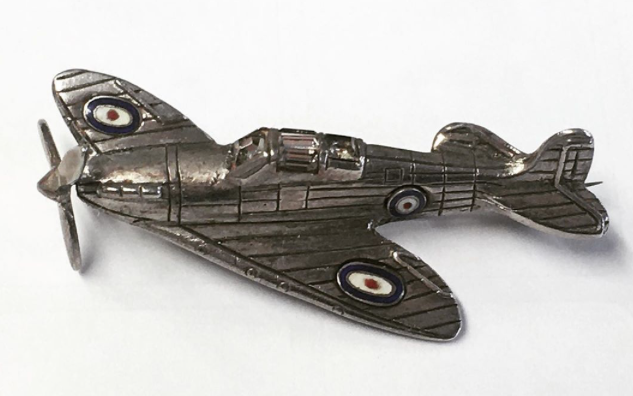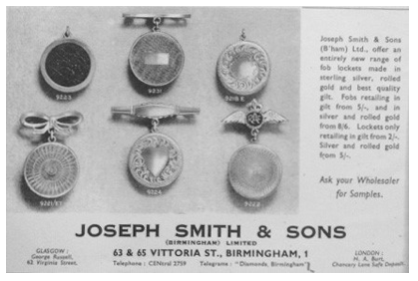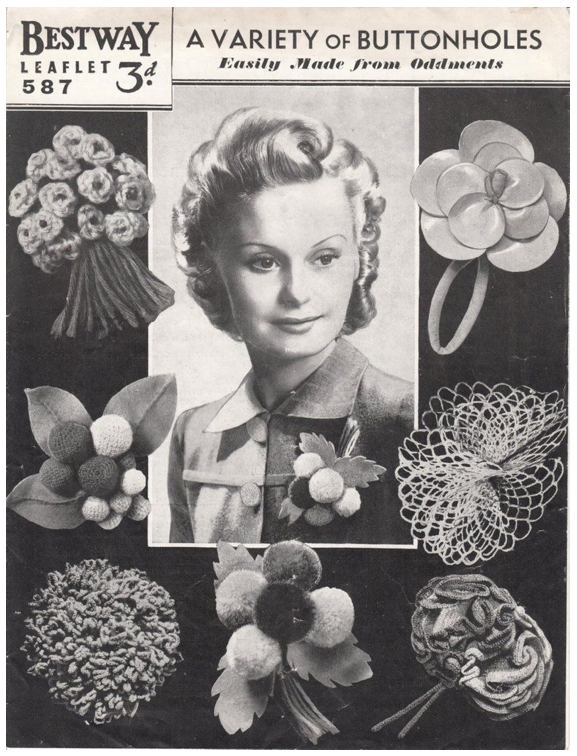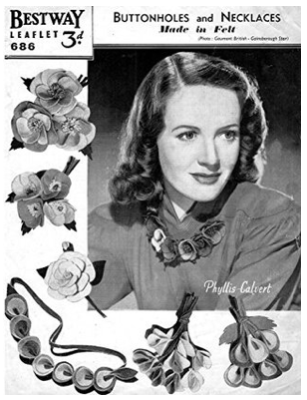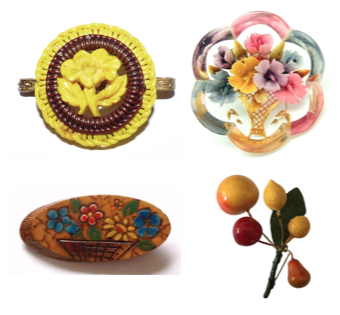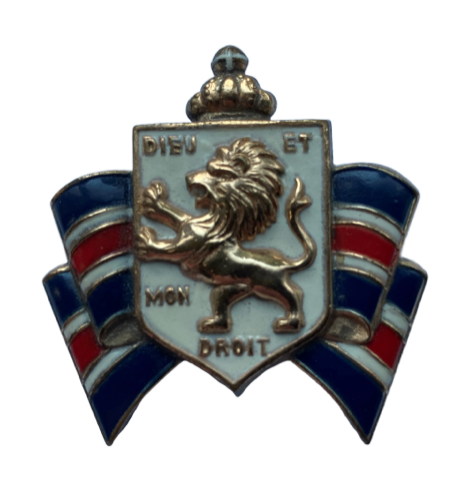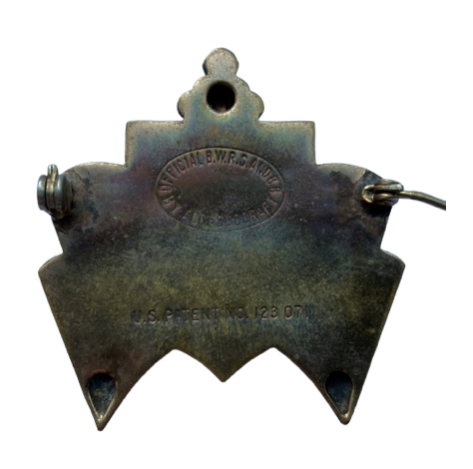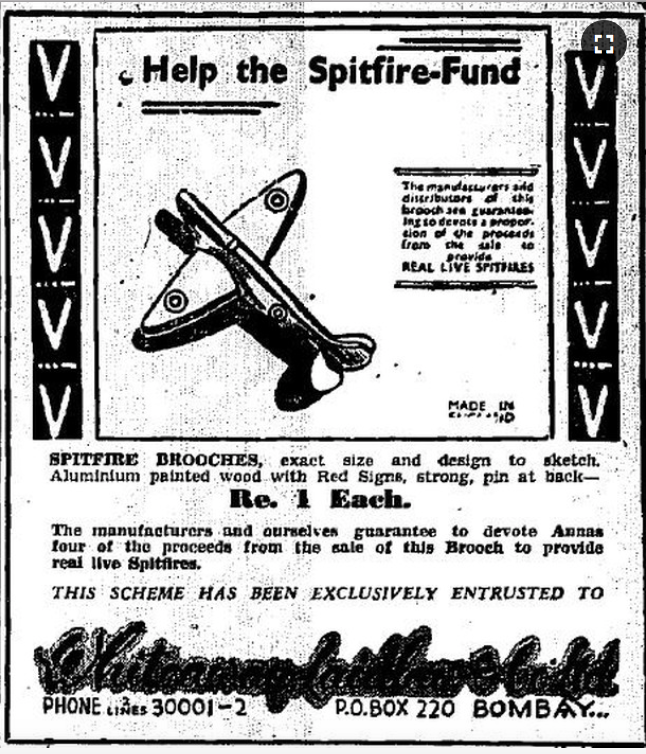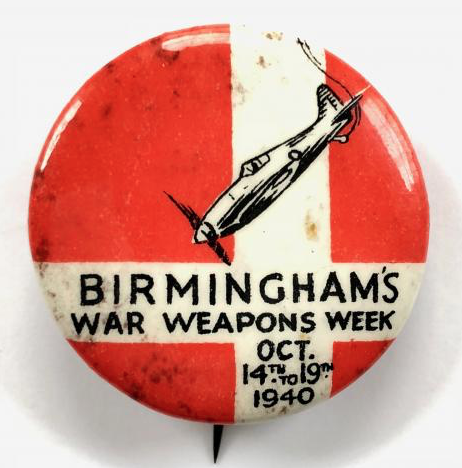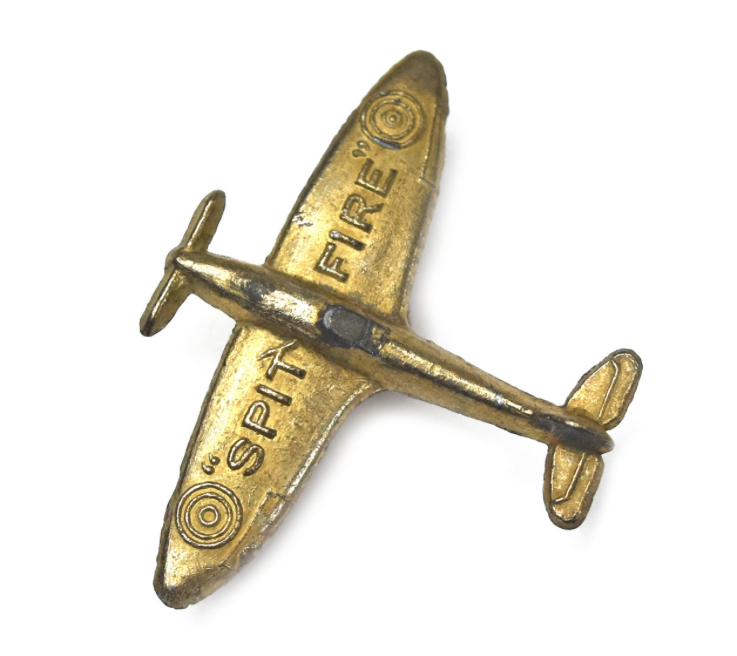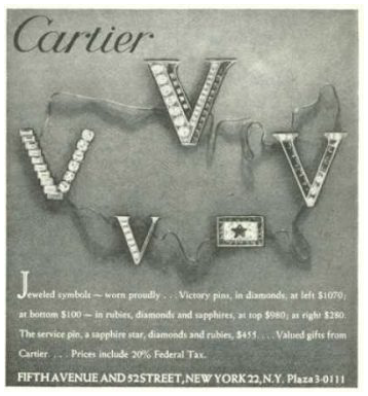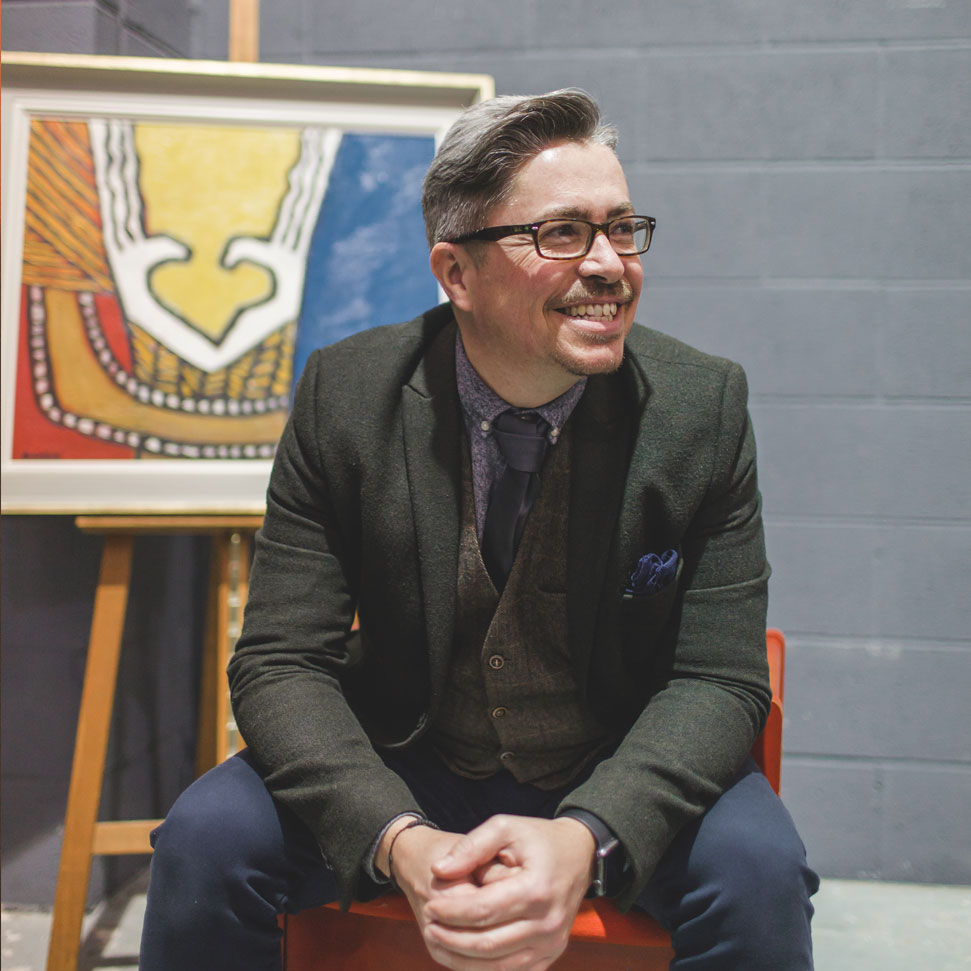Tutorial Tuesday - War Time Jewellery
Wearing your heart on your sleeve......
As we approach the 75th Anniversary of VE Day on the 8th of May Alison Snowdon takes a look at war time jewellery. Romantic, inventive and evocative these pieces tell a far greater story beyond the emblems and motifs they show!
As had been the practice during the First World War, it became popular to display the regimental badge of a loved one in the form of brooches, scarf clips, rings and even earrings during the Second World War. Ranging from modest stamped metal pieces to those with enamel decoration and even pieces set with precious stones, there were pieces to fit all pockets.
During the second World War clothing and food had become rationed, the production of non-essential jewellery was prohibited by the Control of Manufacture and Supply Orders. In 1941, it was stated that only necessary items could be produced which comprised identification bracelets, cuff-links, studs and wedding rings, and then only under license. During the later years of the war, 9ct gold ‘Utility’ wedding bands went into production, which were to weigh less than 3g, however the supply never met the demand. In the Jewellery Quarter, most of the manufacturers changed their output to include supplies for the war effort. Just as 'Make Do and Mend' had been encouraged, the same was applied to jewellery.
Jewellers could still sell second-hand jewellery and newspapers at the time were littered with advertisements asking for people to sell their jewellery and gold. In 1942 Woman and Home reported “the jewellers’ shops say they could sell every locket they put in the window over and over again. Anything sentimental in the way of jewellery is bought as soon as it gets into the shop, whether it’s a true-love knot, a locket or a keepsake ring with clasped hands”.
With the lack of jewellery available for purchase, various ‘do-it-yourself’ patterns and designs appeared in women’s magazines. Women were encouraged to be imaginative and use whatever they could get their hands on! Factories were a great source of scraps and oddments, from snippets of insulating wire to the scrap ends of Perspex often traded outside factory the walls! Perspex brooches were incredibly popular, patterns for reverse carved designs often appeared and you could repurpose old pins to affix them. There are also stories of jewellery being made from pieces of shrapnel from aeroplanes!
About twenty years ago, I inherited a brooch from my grandmother. As with a lot jewellery and antiques, the back was initially more interesting than the front! Stamped to the reverse in an oval is ‘Official B.W.R.S and B.B by Accessocraft’ U.S Patent No. 123071. Enamelled with Dieu Et Mon Droit before patriotic ribbons of red, white and blue this brooch could not be more English and yet I wondered why it had been made, or at least patented in America.
In the days before internet access was so readily available, I took a trip up to the Imperial War Museum research room. After a little searching, I found reference to B.W.R.S, it stood for British War Relief Society. I find it interesting that even now, as I write this in the week we celebrate the 75th anniversary of VE Day, I wonder how many people have heard of this society or know what they did?
Founded in 1939, the B.W.R.S was an umbrella organisation that arranged the delivery of non-military aid to the people of Great Britain. During the war years, charities of all sizes, all across America donated food, clothes, medical supplies and financial aid with the sole aim of it being donated to British civilians, under the B.W.R.S name. In 1940, Bundles for Britain was founded by Mrs Natalie Wales Latham. Mrs Latham organised a knitting circle in front of a New York department store encouraging women to knit for the British. By the spring of 1941, Bundles for Britain had delivered some 40,000 sleeveless jumpers, 10,000 jumpers and 30,000 scarves.
On the 15th October 1940, the patent was granted which allowed Mrs Latham and her Bundles for Britain to begin the production of various button badges and brooches, most of which incorporated the Dieu et mon Droit emblem. These were made by two of America’s leading costume jewellery makers Monet of Accessocraft. The larger enamel pin brooch (like mine) was sold for $2.50 (about $45 or £37 in current monies) and smaller pins and screw back button badges for men were sold for $1 with the patent finally granted on the 15th October 1940. By the end of the war, it is believed she had delivered parcels worth $1.5 million and raised over $1 million in cash donations! In 1946, she was the first non-British subject to be awarded a CBE for her wartime efforts.
Interestingly, in the same year (1940) Lord Beaverbook launched the ‘Spitfire Appeal’ which asked the general public to raise funds and to save and source raw materials all in aid of the war effort. The ‘achievable’ figure of £5000 was the target for each plane, in truth this bore no resemblance to the actual cost, but it was felt a figure that might be met would encourage morale and a feeling of achievement for the nation. One of the ways in which funds where raised was the production of Spitfire button badges and brooches. Much like Sweetheart pins women could buy a piece to suit their financal status ranging from basic models through to those set with precious stones. For thos unable to purchase a brooch patterns also appeared in magazines to show how to form a basic plane outline.
Owing to the fact that jewellery of this period varied so widely in cost and was in most cases, home crafted, collecting pieces from the Second World War today is a hobby that can suit all pockets! As with all areas of collecting always look for condition and beware, especially in the case of RAF pins, of later examples that these were made long after the end of World War Two.
Thankfully the supply of pieces makes it fairly easy to put a collection together and along side being wearable pieces there's the added element of research and history that each pieces offers, unlocking the past and the endless stories still to be told. As each year passes this terrible conflict moves further in to history however collecting, wearing and researching these wonderful pieces keeps the story and individuals alive......and as Winston Churchill said 'Never in the field of human conflict was so much owed by so many to so few'
Do you have a piece of War Time Jewellery that you would like Alison to look at for you? Or manybe you'd like to share your story with us? We'd love to hear from you and by doing so we can continue to remember a generation who went through so much. Email us at info@fieldingsauctioneers.co.uk with your pieces and your stories.
Posted on 5 May 2020
Be in the know
Sign up for auction email alerts so you never miss another sale at Fieldings!
Register now
